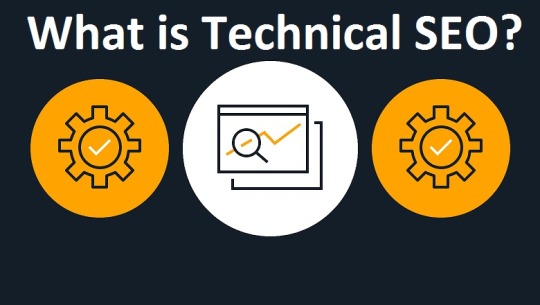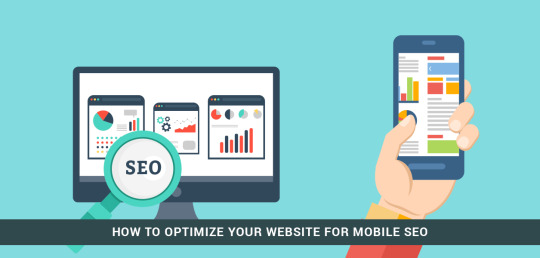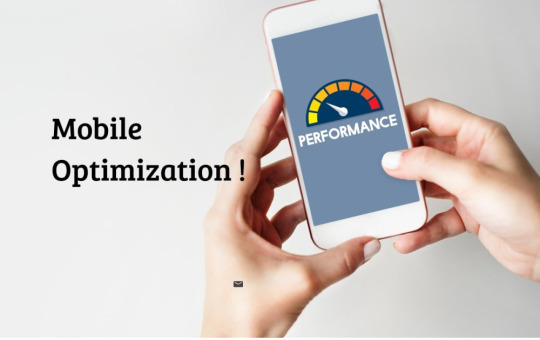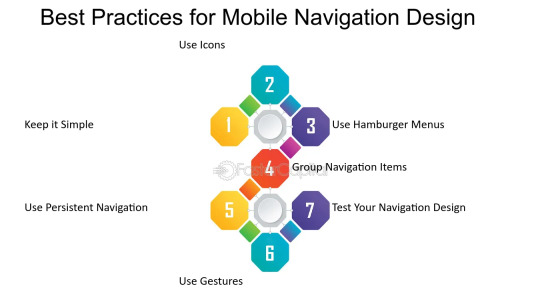#Improve Website's SEO
Explore tagged Tumblr posts
Text
#Can Social Bookmarking Improve My Website's SEO#Social Bookmarking#Website's SEO#Improve Website's SEO#how to check a website's seo#to improve your website's seo performance
0 notes
Text
Unveiling the Best SEO Worker in Bangladesh: Driving Digital Success
#https://dev-seo-worker-in-bangladesh.pantheonsite.io/home/: With years of experience and a deep understanding of search engine algorithms#[Insert Name] possesses unparalleled expertise in SEO strategies and techniques. They stay abreast of the latest trends and updates in the#ensuring that clients benefit from cutting-edge optimization practices.#Customized Solutions: Recognizing that each business is unique#[Insert Name] tailors their SEO strategies to suit the specific needs and goals of every client. Whether it's improving website rankings#enhancing user experience#or boosting conversion rates#they craft personalized solutions that yield tangible results.#Data-Driven Approach: [Insert Name] firmly believes in the power of data to drive informed decision-making. They meticulously analyze websi#keyword performance#and competitor insights to devise data-driven SEO strategies that deliver maximum impact.#Transparent Communication: Clear and transparent communication lies at the heart of [Insert Name]'s approach to client collaboration. From#they maintain open lines of communication#ensuring that clients are always kept informed and empowered.#Proven Results: The success stories speak for themselves. Time and again#[Insert Name] has helped businesses across diverse industries achieve unprecedented growth in online visibility#organic traffic#and revenue generation. Their impressive portfolio of satisfied clients serves as a testament to their prowess as the best SEO worker in Ba#Continuous Improvement: In the dynamic landscape of SEO#adaptation is key to staying ahead. [Insert Name] is committed to continuous learning and refinement#constantly refining their skills and strategies to stay at the forefront of industry best practices.#In conclusion#[Insert Name] stands as a shining beacon of excellence in the realm of SEO in Bangladesh. Their unw
3 notes
·
View notes
Text
What is Technical SEO?

What is Technical SEO?
Technical SEO (Search Engine Optimization) refers to the process of optimizing a website's technical aspects to improve its search engine visibility and performance. While traditional SEO focuses on content, keywords, and backlinks, technical SEO deals with the backend aspects of a website, ensuring that search engines can crawl, index, and understand the site's content effectively. Read More
11 notes
·
View notes
Text
Why SEO is important for marketing purpose of a business?
SEO, or search engine optimization, is important for the marketing purposes of any business because it helps increase the visibility and accessibility of the company's website and content on search engines such as Google.
By optimizing the website and content for relevant keywords and phrases, the company can rank higher in search engine results pages (SERPs), which can drive more organic traffic to the website as well as increase sales.
Some of the benefits of SEO are:
Increased visibility and traffic SEO helps your website rank higher in search engine results pages (SERPs) for relevant keywords and phrases, which in turn increases visibility and traffic to your website.
This is important because the higher your website ranks, the more likely people are to click through to your site.
Improved user experience Good SEO involves optimizing your website's content and structure to make it user-friendly and easy to navigate. This can lead to a better user experience for your visitors, which can increase engagement and conversions.
Cost-effective SEO can be a cost-effective marketing strategy compared to other forms of advertising. While it does require an investment of time and resources, once your website is optimized, it can continue to generate traffic and leads over time without the need for ongoing ad spend.
Long-term benefits Unlike paid advertising, the benefits of SEO can last long after your initial investment.
While it may take time to see results, once your website starts ranking higher, it can continue to do so for months or even years, as long as you continue to maintain your website's SEO.
Overall, SEO is an essential aspect of any company's marketing strategy. By optimizing their website and content for search engines, they can increase their online visibility, attract more qualified leads, build credibility and trust, and ultimately drive more conversions and revenue.

#SEO#Increased visibility and traffic#Improved user experience#Cost-effective#once your website is optimized#Long-term benefits#Unlike paid advertising#once your website starts ranking higher#it can continue to do so for months or even years#build credibility and trust#searchengineoptimization#digitalmarketing#contentmarketing#keywordresearch#linkbuilding#onpageseo#offpageseo#googlealgorithm#serp#backlinks#organictraffic#ppc#sem#googleranking#websiteoptimization#webanalytics#mobileseo#localseo#voicesearchoptimization#gmb
5 notes
·
View notes
Text
Buy Website Traffic KeyUpSeo to improve your SEO rankings
The Website traffic system is one of our most attractive services. It requires valid IPs for Google to visit your site. You can see the statistics of clicks and traffic buy through Google Analytics. According to the analysis of your website SEO and its needs and pages, you can buy Website Traffic and view all visits and clicks through Google Analytics. Sometimes, you need a website traffic generator for a new page you have created on the site or for your ads, in which case you can use our system. 🌐✅https://keyupseo.com/Buy-Website-Traffic.html
#keyupseo #buy_website_traffic #website_traffic_generator #buy_traffic_seo #increase_site_visit_traffic_on_seo
0 notes
Text
Boost Your Website Speed with Lazy Loading - Optimize Performance Using Wizzy.ai
Unlock faster page load times and improved user experience with Lazy Loading. Learn the secrets behind this technique and know how it can give your site a competitive edge. How Wizzy.ai can help you optimize website speed and skyrocket your site's performance.
#Lazy loading for website speed#website speed optimization#Lazy loading best practices#lazy loading for website performance#lazy loading SEO benefits#lazy loading implementation guide#lazy loading SEO best practices#best lazy loading techniques#enhance website speed with lazy loading#lazy loading for faster websites#Wizzy.ai lazy loading tutorial#improve UX with lazy loading#website optimization with lazy loading#best practices for website speed#lazy loading for better mobile performance#Wizzy.ai performance optimization#improve website load time#optimize website performance#accelerate website speed with AI#reduce page load time#web performance improvement techniques#speed up site load times with AI#boost site performance with Wizzy.ai#page load time optimization strategies
0 notes
Text
Why Dubai Businesses Need To Partner With a Professional Website Development Company
In the digitally-first world of today, a good website is something that a business can't afford not to have any more. The city of Dubai is known as one of the global innovation hubs and is the home of thousands of businesses competing to receive attention in such a busy market. So, to stand out from the crowd and maintain an effective online presence, there is a need to collaborate with a professional Website Development Company in Dubai. Here are several reasons why the businesses of Dubai should do this.
1. Expertise and Innovation at one's Fingertips
The skilled teams of designers, developers, and digital strategists man the professional website development companies in Dubai. Keeping themselves updated with the latest technologies and best practices prevalent within the industry are all their pursuits. The accessibility of such expertise means having a website which is visually attractive yet functionally adequate, user-friendly as well as technologically state-of-the-art. While digitalizing your presence, one would find all that brought into play by deploying AI-driven chatbots and responsive designs.
2. Custom Websites for Local and International Readers
Dubai companies service diverse audiences, both locally and in other parts of the globe. A professional website development service will therefore understand the characteristics of the Dubai market-place, including cultural sensitiveness, consumer preferences, among others. They can always come up with customized websites responding to your target audience effectively, ensuring a seamless flow of user experience that causes engagement and conversion.
3. UX or better User Experience
User experience determines the success of a website. A website which is not designed well will lead to frustration from visitors, who then leave, causing a higher bounce rate and missed opportunities for sales. Professional developers emphasize intuitive navigation, fast loading pages, and mobile-friendliness of the designs. These together make for a great user journey which keeps visitors engaging and likely to take the desired action such as purchasing or contacting your business.
4. Search Engine Optimization (SEO)
However beautiful your website might look, it is worthless if nobody can find it. Web Development Company in Dubai always factor in SEO best practice when developing, such as optimization of page speeds and meta tags, ensuring that your website is mobile-friendly and also clean coding. They are constantly improving your search engine ranking. More visibility brings more organic traffic or leads and sales.
5. Cost-Effective in the Long Run
A well-developed website minimizes the risk of technical issues, reduces maintenance costs, and ensures scalability as your business grows. Additionally, a professional website helps generate higher returns by attracting and retaining customers more effectively.
6. Focus on Core Business Activities
When outsourcing Web Development Company in UAE needs, you have more time to focus on core business activities. Professional companies handle everything from the initial design and development stages of a website through maintenance and updates, thus providing one with more time and resources to devote to important matters like customer service, marketing, and business expansion.
7. Support and Maintenance
Websites need to update and maintain themselves regularly. Otherwise, they get outdated and insecure. A professional website development company keeps providing support to solve problems, implement updates, and keep your website running perfectly. This proactive approach may avoid downtime and keep running your website smoothly, with a seamless experience for the users.
8. Competitive Advantage
Competition in the market is at its peak here in Dubai, and therefore, designing a professional website for yourself will keep you miles ahead of the competition. Well-performance of the website lends an impression of your business and brand with respectability and professionalism to your customer who tends to associate them. With this, your position further gets stabilized by strengthening their trust on your self.
Conclusion
In terms of succeeding in the currently trending digital world, a company of Dubai would need to enter partnership with a professional website development agency. Starting from providing solutions tailor-suited according to the client's business needs to improving the customer's experience and providing post-launch support so that you lead the market, these professional website development agencies are quite the backbone of your thriving business. This investment in professional website development will help you have a good standing online but also in generating long-term growth and profits.
#a good website is something that a business can't afford not to have any more. The city of Dubai is known as one of the global innovation hu#to stand out from the crowd and maintain an effective online presence#there is a need to collaborate with a professional Website Development Company in Dubai. Here are several reasons why the businesses of Dub#1. Expertise and Innovation at one's Fingertips#The skilled teams of designers#developers#and digital strategists man the professional website development companies in Dubai. Keeping themselves updated with the latest technologie#user-friendly as well as technologically state-of-the-art. While digitalizing your presence#one would find all that brought into play by deploying AI-driven chatbots and responsive designs.#2. Custom Websites for Local and International Readers#Dubai companies service diverse audiences#both locally and in other parts of the globe. A professional website development service will therefore understand the characteristics of t#including cultural sensitiveness#consumer preferences#among others. They can always come up with customized websites responding to your target audience effectively#ensuring a seamless flow of user experience that causes engagement and conversion.#3. UX or better User Experience#User experience determines the success of a website. A website which is not designed well will lead to frustration from visitors#who then leave#causing a higher bounce rate and missed opportunities for sales. Professional developers emphasize intuitive navigation#fast loading pages#and mobile-friendliness of the designs. These together make for a great user journey which keeps visitors engaging and likely to take the d#4. Search Engine Optimization (SEO)#However beautiful your website might look#it is worthless if nobody can find it. Web Development Company in Dubai always factor in SEO best practice when developing#such as optimization of page speeds and meta tags#ensuring that your website is mobile-friendly and also clean coding. They are constantly improving your search engine ranking. More visibil#5. Cost-Effective in the Long Run#A well-developed website minimizes the risk of technical issues#reduces maintenance costs
0 notes
Text
Mastering On-Page SEO: A Step-by-Step Guide for Beginners
Discover the ultimate step-by-step guide to mastering on-page SEO for beginners. Learn practical tips to optimize your content, boost search engine rankings, and drive organic traffic to your website.
#SEO Guide for Beginners#Step-by-Step SEO#SEO Optimization Tips#Improve Website Rankings#Keyword Optimization#Beginner’s SEO Guide#On-Page Optimization#SEO Basics#Organic Traffic Growth
0 notes
Text
Off-page SEO - How to strengthen your website’s authority
If you’re looking to build your website’s authority and improve your SEO rankings, learn about the difference between off-page and on-page SEO, plus strategies that work around the clock.

0 notes
Text
How to Optimize Your Website for Mobile: Key Steps for Better User Experience

Why Mobile Optimization Matters
Mobile optimization refers to the process of ensuring your website is fully functional and aesthetically appealing on smartphones and tablets. When visitors land on your site from their mobile devices, they expect it to load quickly, be easy to navigate, and deliver a seamless user experience. Poor mobile optimization leads to frustrated users, higher bounce rates, and ultimately, lower conversions.

1. Implement a Responsive Design
Responsive design ensures that your website adapts to different screen sizes, whether it’s a smartphone, tablet, or desktop. Instead of creating separate mobile and desktop versions of your site, a responsive design automatically adjusts the layout based on the device being used.
This approach provides several benefits:
Consistent user experience: Users enjoy a seamless browsing experience regardless of the device they’re on.
Improved SEO: Google values responsive design, and it can boost your search engine rankings.
Faster updates: Since there’s only one version of the website to maintain, updates are simpler and faster to implement.

2. Optimize Your Page Load Speed
Mobile users are often on the go, so if your website takes too long to load, they won’t hesitate to leave. Research shows that even a one-second delay in page load time can result in a significant drop in conversions. To improve your mobile site’s load speed, consider the following steps:
Compress images: Large images can slow down your website. Use tools to compress images without sacrificing quality.
Minimize JavaScript and CSS: Streamlining code helps reduce loading times.
Use browser caching: This allows your site’s elements to be saved in the user’s browser, speeding up load times on subsequent visits.

3. Simplify Navigation for Mobile
Mobile screens are smaller, so it’s crucial to simplify your website’s navigation. A complex or crowded menu can frustrate users. Focus on providing easy access to your most important pages and ensure that your menu is intuitive and easy to use. Consider the following best practices:
Use a hamburger menu: A hamburger menu (three horizontal lines) is a mobile-friendly option for hiding your navigation menu, saving valuable screen space.
Prioritize key pages: Limit the number of menu options and prioritize your most important pages, such as your contact page, products, or services.
Clickable buttons: Make sure buttons are large enough to be easily tapped on a mobile screen.

4. Make Text Easy to Read
When users visit your site on their mobile devices, it’s important that they don’t have to zoom in to read text. Ensure that the font size is large enough to be readable on small screens. Additionally:
Use high contrast colors: Ensure the text contrasts well with the background for readability, especially on mobile devices where lighting conditions can vary.
Avoid long paragraphs: Mobile users prefer scannable content. Break up your content into shorter paragraphs and use bullet points when appropriate.
5. Optimize for Touchscreen Interaction
Mobile devices rely on touchscreen navigation, which is different from the mouse or keyboard navigation used on desktops. To improve usability:
Ensure buttons are large enough: Make sure buttons are big enough for easy tapping, without accidental clicks.
Avoid hover effects: Since hover effects don’t work on touchscreens, ensure all important interactions are clickable and not reliant on hovering.
Test user interactions: Ensure that forms, buttons, and interactive elements work seamlessly on mobile devices.
6. Mobile-Friendly Forms
Forms are essential on many websites, but filling them out on a mobile device can be challenging if not optimized. To improve mobile user experience:
Use smaller forms: Only ask for the most essential information, such as name, email, and phone number.
Enable auto-fill: This helps speed up the process and reduces errors.
Use large, clickable input fields: Ensure users can easily tap and fill in information without zooming.
7. Implement Mobile SEO Best Practices
Mobile SEO is critical for ensuring that your site performs well in search engine rankings on mobile devices. Some key tactics include:
Optimize for local searches: Many mobile users search for local businesses. Make sure your website is optimized for local SEO by including location-specific keywords and registering on Google My Business.
Use structured data: This helps search engines understand the content of your pages and can improve your visibility in search results.
8. Test Your Website Across Different Devices
Before launching your mobile-optimized site, it’s important to test it across multiple devices and browsers to ensure everything functions properly. There are several tools available to test your site’s mobile responsiveness and user experience.
Conclusion
Mobile optimization is no longer optional—it’s essential for providing a top-notch user experience and improving your SEO rankings. By implementing a responsive design, improving page load speed, simplifying navigation, and making your site touchscreen-friendly, you can enhance both user experience and mobile traffic.
At Nexgen Minds, we specialize in web design and SEO strategies that help businesses optimize their websites for mobile devices. Whether you need to redesign your website or improve your mobile traffic, our team can assist you in achieving the best results.
Stay connected with us on social media for more tips and updates! Follow us on @NexgenMinds and join our agency to take your business to the next level.
Let’s get your business optimized for mobile and grow your digital presence today!
Stay updated on the latest email marketing strategies and best practices by following Nexgen Minds on social media! Facebook: @NexGenMinds Linkedin: @NexGenMinds
Instagram: @NexGenMinds
Take the first step towards optimizing your digital marketing strategy with Nexgen Minds—where innovation meets results!
0 notes
Text
Top Strategies for Website Architecture SEO Optimization

When it comes to improving your website's SEO performance, one of the most critical factors is website architecture. A well-structured website not only provides a better user experience but also plays a significant role in SEO optimization. In this guide, we will cover how to optimize website structure for SEO, implement SEO best practices for website architecture, and share tips to improve website architecture for better SEO.
1. Understand the Importance of Website Structure for SEO
The foundation of website structure optimization lies in how easy it is for search engines to crawl and index your content. An efficient website architecture helps search engines like Google understand the relationships between your pages, ensuring that important content is prioritized and easily discoverable.
2. How to Optimize Website Structure for SEO
To start optimizing your website's structure, focus on creating a clear and logical hierarchy. Here’s how to do it:
Use a Simple URL Structure: Short, descriptive URLs are easier for search engines to read and understand. Keep them relevant to the content of each page.
Create a Well-Defined Navigation: Organize your navigation so users can quickly find what they’re looking for. This makes it easier for search engines to crawl and understand the content on your site.
Internal Linking: Effective internal linking connects relevant content on your website. This helps spread link equity and allows search engines to index pages more efficiently.
3. SEO Best Practices for Website Architecture
Implementing SEO best practices for website architecture ensures that both search engines and users can navigate your site effortlessly. Here are a few practices to follow:
Mobile-First Design: With mobile traffic surpassing desktop users, designing your website with mobile-first principles ensures that both mobile users and search engines can access content smoothly.
Optimize Site Speed: A fast-loading website improves user experience and is a ranking factor for SEO. Minimize large images, use caching, and employ content delivery networks (CDNs) to reduce load times.
Schema Markup: Adding structured data (schema markup) to your pages helps search engines understand your content, potentially leading to rich snippets and improved rankings.
4. Improve Website Architecture for Better SEO
There are several ways to improve website architecture for better SEO, focusing on both technical and strategic enhancements:
Sitemaps: Ensure your website has an XML sitemap that search engines can crawl. Submit this sitemap to Google Search Console for quicker indexing of your pages.
Avoid Duplicate Content: Duplicate content can confuse search engines and dilute the relevance of your pages. Use canonical tags to indicate the preferred version of content.
Breadcrumbs: Adding breadcrumb navigation helps users and search engines understand where they are on your site. It also creates a better structure for Google to index content.
5. Website Structure Optimization Tips
For ongoing website structure optimization, consider the following tips to maintain and improve your SEO efforts:
Conduct Regular Site Audits: Regularly audit your website’s architecture to identify issues such as broken links, duplicate content, or slow-loading pages.
Ensure Logical Content Grouping: Group related content together under relevant categories and subcategories. This helps users and search engines find content more easily.
Monitor and Update Your Links: Make sure all internal and external links are working correctly. Broken links can harm both user experience and SEO.
#Website Structure Optimization Tips#Improve Website Architecture for Better SEO#SEO Best Practices for Website Architecture#How to Optimize Website Structure for SEO
0 notes
Text
youtube
#Ultimate Musicians Website Guide#Musician's Website Tips#Website for Musicians#Music Website SEO#Build a Music Website#Musician's Online Presence#Music Website Optimization#Musician Website Guide#Website Tips for Musicians#Email List for Musicians#Musician Website Strategies#Music Website Integration#Improve Your Music Website#Music Website Building#Music Marketing Tools#Music Website SEO Tips#Musicians Digital Presence#Music Website Essentials#Youtube
0 notes
Text
How To Create A Free Website | Launch Your Dream Website for FREE!
Contact: Click
#website#wordpress#education#freelance#free website#Make Your Website#seo services#seo#self love#self care#self improvement#tattoos#hairstyle#beautiful model#beauty#makeup#hotel#traveling#travel photography#travel#tourism#travel blog
0 notes
Text
Boost Your Website Speed with Lazy Loading - Optimize Performance Using Wizzy.ai
Unlock faster page load times and improved user experience with Lazy Loading. Learn the secrets behind this technique and know how it can give your site a competitive edge. How Wizzy.ai can help you optimize website speed and skyrocket your site's performance.
#Lazy loading for website speed#website speed optimization#Lazy loading best practices#lazy loading for website performance#lazy loading SEO benefits#lazy loading implementation guide#lazy loading SEO best practices#best lazy loading techniques#enhance website speed with lazy loading#lazy loading for faster websites#Wizzy.ai lazy loading tutorial#improve UX with lazy loading#website optimization with lazy loading#best practices for website speed#lazy loading for better mobile performance#Wizzy.ai performance optimization#improve website load time#optimize website performance#accelerate website speed with AI#reduce page load time#web performance improvement techniques#speed up site load times with AI#boost site performance with Wizzy.ai#page load time optimization strategies
0 notes
Text
#Best SEO Company Australia#Expert SEO Tips#Markonik SEO Services#Improve Website Rankings#Top SEO Agency Australia
0 notes